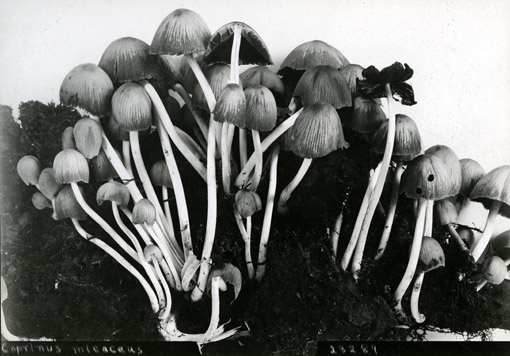
Three edible species of Coprinus
CUP-A-023289a
Atkinson studied both edible and poisonous species of mushrooms, and meant to help people know the difference. He wrote:
"During the early summer of 1897, while collecting a "mess" of Coprinus micaceus from a large tuft growing around the base of a stump on one of the principal streets of Ithaca, a passer-by halted, probably for the charitable purpose of giving some information which he thought might save my life. "Them's toad-stools ain't they?" "Yes," I replied. "Well, I thought so," said he. Thereupon I ate one of the "toad-stools" raw, and received from him a look of mingled pity and despair as he passed on."1
Coprinopsis micaceus (edible).
Atkinson felt strongly about the usefulness of his photographs, and felt them most often superior to drawings and paintings: "That they accurately portray the habit and specific characters of the plants I am convinced by the experiene of my little boy of eight years. While selecting the illustrations for this study one evening, I showed him the photographs, told him the names of each and the parts of the mushroom. The subject was not mentioned again until a week later when I brought in a few specimens of one of the species. "What is the name of this?" I said. "That's the shaggy-mane," he said."1
